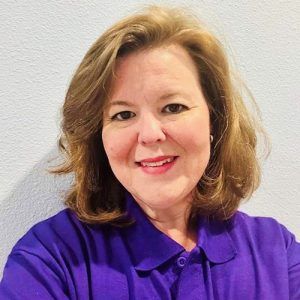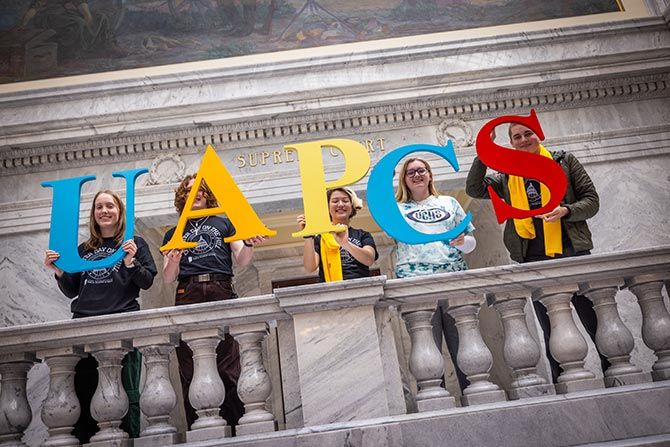Utah Connections Academy is a tuition-free virtual charter school dedicated to providing a high-quality, personalized education to students in grades K-12 across Utah. The school’s mission is to equip students with the skills and knowledge they need to succeed while also providing the flexibility that online learning offers. With a commitment to individualized learning, our educators continually assess students’ needs and tailor instruction to ensure academic success. The flipped learning model is one tool we’ve implemented to help our students meet their academic goals.
Inside Look at Online Learning
Utah Connections Academy teachers are specially trained to deliver instruction in the virtual environment and emphasize the importance of fostering meaningful connections with students and their families. A parent, or another adult “Learning Coach,” plays a key role alongside the Utah-certified teachers to set daily routines, monitor student progress in the home and track attendance.
Our students engage with our curriculum through Pearson Online Classroom, a robust learning management platform that connects parents, teachers and students from home or anywhere there is an internet connection. With Pearson Online Classroom, students engage with course content asynchronously, working through lessons at their own pace and providing an opportunity for self-directed learning.
Students learn synchronously with their classmates through LiveLesson® sessions — real-time, interactive online lessons facilitated by teachers on a weekly basis. These sessions are designed to reinforce core concepts, answer student questions and provide additional instructional support.
To enhance student engagement and comprehension, Utah Connections Academy introduced flipped learning as an instructional strategy in several grades and subject areas.
Incorporating Flipped Learning Online
According to the Flipped Learning Network, “Flipped Learning is a pedagogical approach in which direct instruction moves from the group learning space to the individual learning space, and the resulting group space is transformed into a dynamic, interactive learning environment where the educator guides students as they apply concepts and engage creatively in the subject matter.”
In a traditional classroom model, teachers typically introduce new content during class time, followed by independent practice as homework. Flipped learning reverses this process. At Utah Connections Academy, students are first introduced to new material independently through recorded lessons, readings and interactive online resources. Then, during those live online classroom sessions, teachers address questions, facilitate discussions and lead activities that reinforce understanding and application of the material — rather than introducing new material.
This shift allows teachers to focus on higher-order thinking skills during live online classroom sessions, such as analysis, evaluation and problem-solving. It also empowers students to engage more actively with the material, as they come to class with baseline knowledge and prepared questions. This model encourages a more student-centered learning environment, where teachers act as facilitators rather than lecturers.
Practical Application in the Virtual Classroom
A prime example of flipped learning at Utah Connections Academy is with our high school science instruction. Science teachers have integrated a variety of interactive applications, such as Nearpod, Kahoot! and Quizizz, to deliver content in engaging and accessible ways.
These lessons are structured to introduce essential standards through dynamic experiences, including:
- Interactive Videos: Students watch pre-recorded instructional videos that explain scientific concepts and demonstrate real-world applications.
- Simulations: Virtual labs and simulations allow students to experiment with scientific principles in a controlled environment, testing hypotheses and analyzing outcomes.
- Formative Assessments: Built-in quizzes and interactive activities provide immediate feedback, helping students assess their understanding and identify areas where they need more support.
Then, during the live online classroom sessions, teachers use the time to reinforce and deepen understanding. Instead of re-teaching the material, they facilitate group discussions, problem-solving activities and hands-on experiments where possible. For example, after studying chemical reactions, students might work together in a live online classroom session to predict reaction outcomes based on different variables.
This approach allows teachers to identify and address learning gaps more effectively. Students are encouraged to ask questions and collaborate with their peers, leading to a more interactive and socially connected learning experience. Teachers also have more opportunities to provide differentiated instruction, adapting the lesson to meet the unique needs of each student.
Benefits of Flipped Learning
Since implementing flipped learning, Utah Connections Academy has observed several positive outcomes:
- Increased Student Engagement: Students are more prepared and confident when entering live online classroom sessions, which has led to more active participation and deeper discussions.
- Improved Academic Performance: Formative assessments and targeted instruction have helped identify and address learning gaps more quickly, leading to improved test scores and course completion rates.
- Greater Parent Involvement: By providing structured, independent learning materials, parents have clearer guidance on how to support their children’s education at home.
- Enhanced Teacher-Student Interaction: Teachers spend less time lecturing and more time providing individualized support, creating stronger teacher-student connections.
With the increased responsibility for the student for self-directed learning, Utah Connections Academy implemented additional support, including one-on-one academic coaching, integration into the learning platform and regular newsletters to ensure both students and families are supported and successful. Teachers have also benefited from ongoing professional development to refine their flipped learning strategies. Collaborative planning sessions and peer observation opportunities have allowed educators to share best practices and troubleshoot common challenges.
Utah Connections Academy plans to expand the flipped learning model to additional subject areas and grade levels. The goal is to create a more cohesive and consistent learning experience across all grade levels that reinforces the benefits of active, student-centered learning. We look forward to continued success with the flipped learning model and seeing our students take greater ownership of their learning while also ensuring they receive the structured support and real-time interaction needed for academic success.








